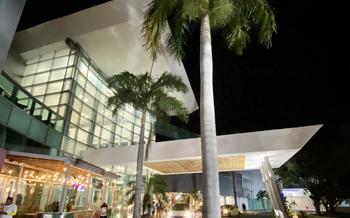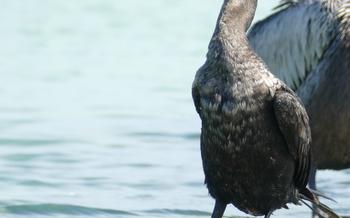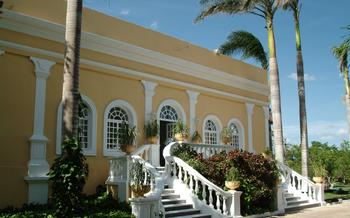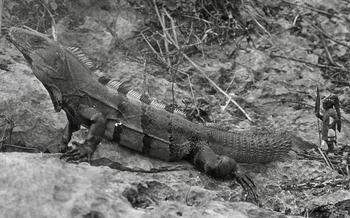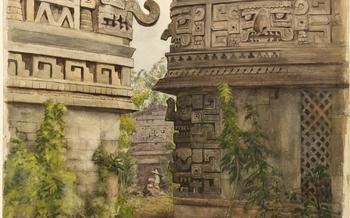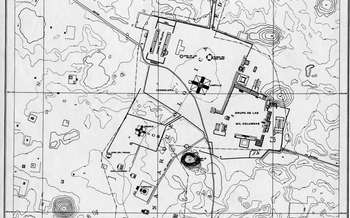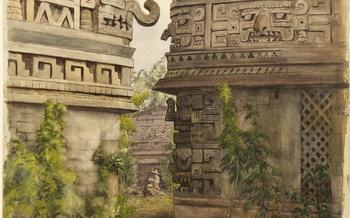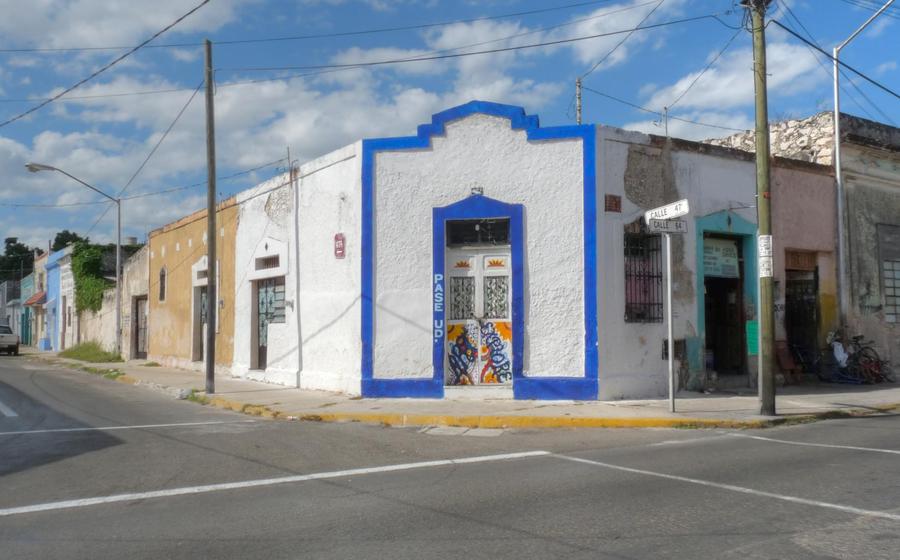
Ría Celestún Biosphere Reserve
- Ría Celestún Biosphere Reserve: A Haven for Nature Lovers
- Location and Accessibility
- Boat Tours: A Must-Do Experience
- Flamingos: A Symbol of Celestún
- Other Wildlife Encounters
- Visiting the Reserve: Practical Tips
- Exploring the Mangroves
- Birdwatching Opportunities
- Safety Precautions: Ensuring a Safe and Enjoyable Visit
- Photography Tips
- Sustainable Tourism: Preserving the Natural Beauty
- Insider Tip: Hidden Cenotes
Ría Celestún Biosphere Reserve: A Haven for Nature Lovers
Nestled along the picturesque coastline of the Yucatan Peninsula, the Ría Celestún Biosphere Reserve captivates nature enthusiasts with its unique ecosystem, rich biodiversity, stunning landscapes, and unwavering commitment to conservation efforts. Designated as a UNESCO World Heritage Site, this protected area encompasses a diverse array of habitats, including lush mangrove forests, coastal lagoons, salt flats, and pristine beaches. The reserve provides a sanctuary for an astonishing variety of plant and animal species, creating a haven for nature lovers seeking an unforgettable and immersive experience in the heart of Mexico's natural wonders.
Location and Accessibility
The Ría Celestún Biosphere Reserve is located on the stunning Yucatan Peninsula, in the state of Yucatán, Mexico. It is situated approximately 90 kilometers (56 miles) northwest of the vibrant city of Mérida, the capital of Yucatán. The reserve is easily accessible by car, making it a convenient day trip or a starting point for exploring the region's other natural wonders.
For those without their own transportation, there are various transportation options available. Organized tours from Mérida are a popular choice, offering the convenience of transportation, knowledgeable guides, and the opportunity to combine the visit to the reserve with other nearby attractions. Public transportation is also an option, with buses departing from Mérida's main bus station.
Once in Celestún, the main town within the reserve, there are local boat operators who offer guided tours to explore the mangroves, lagoons, and wildlife-rich areas of the reserve. These tours are typically conducted in small groups, allowing visitors to get up close and personal with the reserve's diverse ecosystems and wildlife.
Boat Tours: A Must-Do Experience
Exploring the Ría Celestún Biosphere Reserve by boat is an unforgettable experience that allows visitors to delve deeper into the reserve's diverse ecosystems and wildlife. The boat tours typically start from the fishing village of Celestún and take visitors through the intricate network of mangrove channels, coastal lagoons, and open waters.
As the boat glides through the mangroves, visitors can admire the intricate root systems of these remarkable trees, which provide a habitat for a variety of marine life. The boat tour also offers excellent opportunities for birdwatching, as the reserve is home to over 300 species of birds, including migratory species from North America and South America.
One of the highlights of the boat tour is the chance to spot crocodiles basking in the sun or swimming in the water. These impressive reptiles can often be seen near the mangrove edges, and the guides are knowledgeable about their behavior and ecology.
Sunset cruises are another popular option, offering visitors the chance to experience the magical beauty of the reserve as the sun dips below the horizon. The sky transforms into a canvas of vibrant colors, casting a warm glow on the surrounding landscape and creating a serene atmosphere.
Flamingos: A Symbol of Celestún
The Ría Celestún Biosphere Reserve is renowned for its impressive flamingo population, the largest in North America. These graceful birds, with their vibrant pink plumage, are a sight to behold. They can be spotted in large flocks, feeding and nesting in the shallow waters of the reserve. During the winter months, the reserve transforms into a sea of pink as thousands of flamingos migrate to the area to escape the cold northern climates. Birdwatchers and nature enthusiasts from around the world flock to Celestún to witness this awe-inspiring spectacle.
Flamingos are filter feeders, using their specialized beaks to sift through the mud and water for food. Their diet consists mainly of small crustaceans, algae, and other aquatic organisms. They build their nests on small mounds of mud and vegetation, creating a unique landscape that is both beautiful and fascinating. Visitors to the reserve can take boat tours that offer a close-up view of these magnificent birds, providing an unforgettable opportunity to observe their feeding and nesting habits.
Other Wildlife Encounters
Beyond the captivating flamingoes, the Ría Celestún Biosphere Reserve is home to a diverse array of other awe-inspiring wildlife. Sea turtles grace the shores of the reserve, nesting and laying their eggs in the sandy beaches. Their presence adds a touch of wonder and fragility to the reserve's ecosystem.
Dolphins, with their playful nature and intelligence, are a joy to encounter. They can be spotted frolicking in the waters, delighting visitors with their acrobatic leaps and graceful movements.
Manatees, gentle giants of the sea, are another highlight of the reserve. These herbivores can be seen grazing peacefully in the shallow waters, their calm demeanor providing a sense of tranquility to the surroundings.
Howler monkeys, with their distinctive calls that reverberate through the jungle, add a touch of drama to the reserve's symphony of sounds. Their agile movements through the trees offer a glimpse into the vibrant life that thrives within the reserve's lush vegetation.
These encounters with the diverse wildlife of the Ría Celestún Biosphere Reserve create lasting memories and foster a deep appreciation for the intricate tapestry of life that calls this special place home.
Visiting the Reserve: Practical Tips
To make the most of your visit to the Ría Celestún Biosphere Reserve, here are some practical tips:
-
Best time to visit: The dry season from November to April offers the best weather conditions for exploring the reserve. During this time, the skies are clear, the humidity is lower, and the wildlife is more active.
-
Packing essentials: Pack comfortable clothing, sturdy shoes, a hat, sunglasses, sunscreen, insect repellent, and a camera. Bring a swimsuit if you plan to swim or kayak.
-
Entrance fees and permits: There is a small entrance fee to enter the reserve. You may also need to obtain a permit for certain activities such as fishing or camping.
-
Respecting the environment: Remember that the Ría Celestún Biosphere Reserve is a protected area. Please respect the environment by staying on designated trails, not littering, and avoiding disturbing the wildlife.
Exploring the Mangroves
The Ría Celestún Biosphere Reserve is home to a vast mangrove forest, a unique and fascinating ecosystem that plays a vital role in the region's biodiversity. Exploring these mangroves is a must-do experience for nature enthusiasts, offering a chance to immerse themselves in the tranquil beauty of this watery wilderness.
Stroll along the well-maintained walking trails or venture deeper into the mangroves on a kayaking or canoeing excursion. As you navigate the narrow waterways, marvel at the intricate root systems of the mangrove trees, which rise above the water like natural sculptures. The mangroves provide a haven for a variety of flora and fauna, including crabs, mollusks, and fish that thrive in this unique habitat.
Keep an eye out for the diverse birdlife that inhabits the mangroves, from colorful songbirds to majestic herons and egrets. With over 300 species of birds recorded in the reserve, it's a paradise for birdwatchers and photographers alike.
As you explore the mangroves, remember that this is a delicate ecosystem that requires our respect and protection. Stay on designated trails to minimize your impact, and avoid disturbing the wildlife. Embrace the serene beauty of this natural sanctuary, and let the mangroves transport you to a world of tranquility and wonder.
Birdwatching Opportunities
With over 300 species of birds recorded in the Ría Celestún Biosphere Reserve, it is a veritable paradise for bird enthusiasts. The reserve provides a diverse habitat for both resident and migratory birds, making it an ideal spot for birdwatching throughout the year. Whether you are a seasoned birdwatcher or just starting, Celestún offers an unforgettable birding experience.
One of the highlights of birdwatching in Celestún is the opportunity to spot migratory birds. During the winter months, the reserve welcomes a variety of migratory species from North America, including warblers, flycatchers, and vireos. These birds seek refuge in the warm climate of the Yucatan Peninsula, making Celestún a crucial stopover point on their long journey.
The best way to explore the diverse birdlife of the reserve is to join a guided birdwatching tour. Experienced guides will take you to the best birdwatching spots, helping you spot and identify different species. They can also provide you with valuable information about the behavior and habitats of the birds.
If you prefer to explore independently, there are several walking trails and boardwalks that wind through the mangroves and coastal lagoons. These trails offer excellent opportunities for birdwatching, as you can get up close and personal with the birds in their natural habitat. Remember to bring your binoculars and a field guide to help you identify the different species.
Whether you choose to join a guided tour or explore on your own, birdwatching in the Ría Celestún Biosphere Reserve is an unforgettable experience. The diverse birdlife, stunning scenery, and tranquil atmosphere make it a must-visit destination for any nature lover.
Safety Precautions: Ensuring a Safe and Enjoyable Visit
Exploring the Ría Celestún Biosphere Reserve is a safe and rewarding experience, but it's essential to take precautions to ensure a trouble-free visit. Here are some safety tips to keep in mind:
-
Stay on the Marked Trails: The reserve has well-marked trails and boardwalks for visitors to follow. Staying on these designated paths helps prevent damage to the delicate ecosystem and reduces the risk of encountering wildlife in unexpected areas.
-
Hydration and Sun Protection: The Yucatán Peninsula can be hot and humid, so it's crucial to stay hydrated by carrying plenty of water with you. Additionally, protect yourself from the sun by wearing sunscreen, sunglasses, and a hat to avoid sunburn and heatstroke.
-
Avoid Contact with Wildlife: While it's tempting to get up close to the wildlife, it's important to remember that these animals are wild and can be unpredictable. Maintain a safe distance and avoid touching or feeding them to prevent any potential encounters.
-
Be Aware of Potential Hazards: The reserve is home to various wildlife, including crocodiles and snakes. While these animals generally avoid humans, it's essential to be aware of their presence and take precautions to avoid any encounters.
Photography Tips
The Ría Celestún Biosphere Reserve is a photographer's paradise, offering endless opportunities to capture the beauty of its natural wonders. Whether you're a professional photographer or simply an enthusiast, here are some tips to help you make the most of your photography experience:
-
Capture the beauty of the reserve: The reserve is home to a diverse range of landscapes, from tranquil mangroves to vibrant coastal lagoons. Take your time to explore the different areas and capture the unique beauty of each one.
-
Use appropriate camera settings: The lighting conditions in the reserve can vary depending on the time of day and weather conditions. Adjust your camera settings accordingly to ensure you get the best possible shots.
-
Patience and timing for wildlife shots: Wildlife photography requires patience and timing. Be patient and wait for the perfect moment to capture the animals in their natural habitat.
-
Respect the natural surroundings: Remember that you are a guest in the reserve. Respect the natural surroundings and avoid disturbing the wildlife. Use a telephoto lens to capture close-up shots without getting too close to the animals.
Sustainable Tourism: Preserving the Natural Beauty
As a traveler, it is important to be mindful of the impact our actions have on the environment, especially in delicate ecosystems like the Ría Celestún Biosphere Reserve. Practicing responsible tourism is essential to preserving the natural beauty and biodiversity of the reserve for future generations.
Opt for local guides and tour operators who prioritize sustainability. They often have a deep understanding of the ecosystem and can provide valuable insights while minimizing environmental impact.
Reducing waste and pollution is crucial. Avoid single-use plastics, bring your own reusable water bottle, and dispose of trash properly. By doing so, you help protect the wildlife and their habitats.
Supporting local businesses is a great way to contribute to the local economy and empower the community. Purchase souvenirs from local artisans, dine at family-owned restaurants, and stay in locally-run accommodations. Your support helps sustain the livelihoods of the people who depend on the reserve.
By practicing these principles, you become an advocate for sustainable tourism, ensuring that the Ría Celestún Biosphere Reserve remains a haven for wildlife and a source of wonder for generations to come.
Insider Tip: Hidden Cenotes
Beyond the mangroves and coastal lagoons, the Ría Celestún Biosphere Reserve hides a secret treasure: hidden cenotes. These natural sinkholes, formed by the collapse of limestone bedrock, reveal crystal-clear waters and offer a refreshing retreat from the tropical heat.
To discover these hidden gems, venture off the beaten path and explore the reserve's interior. Keep an eye out for signs indicating the presence of cenotes, or ask local guides for directions. Some cenotes are accessible by foot, while others require a short hike or kayak ride.
Once you've found a cenote, take a moment to appreciate its serene beauty. Dive in for a swim and enjoy the tranquility of these secluded natural pools. Remember to respect the environment and leave no trace of your visit.
Discovering hidden cenotes is a unique and adventurous experience that allows you to connect with the untouched beauty of the Ría Celestún Biosphere Reserve. Embrace the opportunity to explore these hidden gems and create lasting memories in this natural paradise.
